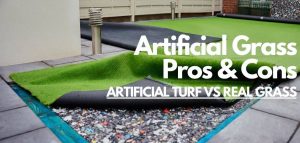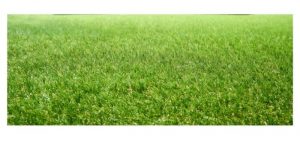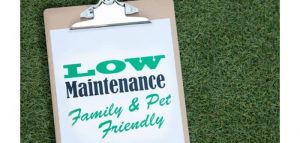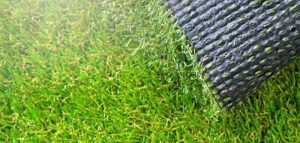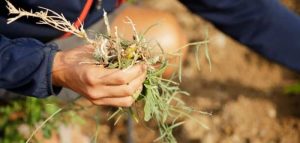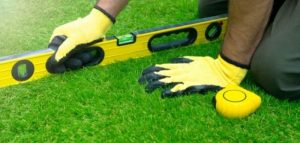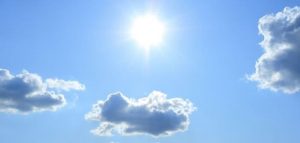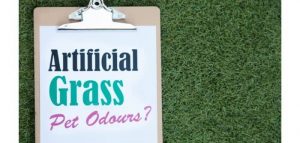If you’re considering artificial grass for your home or business. In that case, you need to know the pros and cons of artificial grass.
Fake grass has become an increasingly popular alternative to natural grass in recent years, and there are a lot of benefits to it.
However, it’s not always the best option for everyone, and there are also some drawbacks that you need to be aware of.
In this blog post, we will discuss the pros and cons of artificial grass so that you can make an informed decision about whether or not it’s right for you.
Contents
- Artificial Grass Pros: Advantages of Fake Grass Lawns
- Aesthetics
- Water Conservation
- Low Maintenance
- Durable & Long-Lasting
- Safe for Children and Pets
- It can be used in any Climate
- Not affected by Pests or Weeds
- Environment Friendly
- Lowers Carbon Emissions
- Cons of Artificial Grass (Disadvantages of Synthetic Grass)
- Installation costs
- Heats Up in Direct Sunlight
- Odor
- Infill
- Safety
- Artificial Grass vs Real Grass
- Conclusion
- FAQ
- Is it worth putting in fake grass?
- Does artificial grass get damaged?
- Does artificial grass get dirty?
- Is artificial grass a good investment?
- What is Artificial Grass made of?
Artificial Grass Pros: Advantages of Fake Grass Lawns
Installing artificial grass has several benefits. It’s an environmentally friendly way to have a green lawn, and it’s also low maintenance. Not to mention, it looks great!
Here are the list of benefits that comes with installing fake grass.
Aesthetics
One of the best things about artificial grass is that it always looks green and lush all year round, and it can be customized to fit your personal style.
One of the main reasons people choose artificial grass is for aesthetic purposes. A well-manicured lawn can significantly improve your home’s curb appeal and value.
The blades are made from synthetic materials that don’t fade in the sun or brown in the winter.
Water Conservation
Water is one of the most important resources on Earth, yet it is something we often take for granted.
One of the most significant advantage of artificial grass is that it helps conserve water. This is because artificial lawn never needs to be watered.
Artificial grass can save a significant amount of water in the long run, especially in areas where water is scarce.
Low Maintenance
One of the main reasons people choose artificial grass is because of its low maintenance.
This means that you will not have to worry about mowing, watering, and fertilizing your artificial lawn like a natural grass lawn.
This can save you a lot of time and money over the years.
Durable & Long-Lasting
Artificial grass is also very durable. It can withstand a lot of wear and tear, which means that it will last for up to 20 years in some cases.
Artificial grass is made to withstand heavy foot traffic and pets. It won’t get matted down or brown like real grass can.
This saves you money in the long run as you won’t have to replace your lawn every few years.
Safe for Children and Pets
Another benefit of artificial turf is that it is safe for kids and pets. There are no chemicals used in its production, and it doesn’t attract bugs or other pests.
It’s also softer than natural grass, so it’s more comfortable for your kids and pets to play on.
Plus, you won’t have to worry about them tracking mud and dirt into your home.
It can be used in any Climate
Artificial grass can be used in any climate, which is another big advantage.
Whether you live in a hot, dry climate or a cold, wet one, artificial grass will still look green and lush all year round.
This is perfect for homeowners who want to enjoy a beautiful lawn without having to deal with the hassle of maintaining it.
It’s perfect for people who live in areas that experience all four seasons.
Not affected by Pests or Weeds
Another significant advantage of artificial grass is that it’s not affected by pests or weeds.
Since artificial turf is made of synthetic materials, weeds can’t grow through it the way they can with real grass.
This means that you’ll never have to worry about your lawn being damaged by pesky insects or invasive plants and you won’t have to spend hours every week trying to get rid of weeds.
Environment Friendly
Since artificial grass is made of synthetic materials, it doesn’t need pesticides or fertilizers to stay green and healthy.
This is great news for the environment as it reduces the number of harmful chemicals that are used on lawns each year.
It’s also good news for your wallet as you won’t have to spend money on these products every year.
Lowers Carbon Emissions
Finally, artificial grass also helps to lower carbon emissions. This is because it doesn’t require the use of gas-powered lawnmowers or other lawn care equipment.
Synthetic grass is made from recycled materials, so it has a smaller environmental footprint than natural grass.
This means that you won’t have to invest in a lawnmower, which can be expensive, and you won’t have to worry about storing it or keeping it maintained.
It also means that you won’t have to use gas or oil to power your lawnmower, good for the environment.
Suppose you’re looking for a low-maintenance way to have a beautiful lawn. In that case, artificial grass is definitely the way to go.
Cons of Artificial Grass (Disadvantages of Synthetic Grass)
While there are several benefits to having artificial grass installed, there are also some drawbacks of artificial lawns that you need to be aware of before deciding.
Installation costs
One of the most significant disadvantages of artificial turf is the initial cost. It’s more expensive than natural grass, both in terms of materials and installation.
If you’re not handy with tools, you’ll likely need to hire a professional to install your artificial turf. This can add several hundred dollars to the overall cost of your project.
However, it’s important to keep in mind that synthetic turf will save you money in the long run, since you won’t have to pay for water, fertilizer, or lawn maintenance.
Many homeowners believe that the benefits of artificial grass outweigh the costs.
Heats Up in Direct Sunlight
Another downside of an artificial grass lawn is that it can get quite hot in direct sunlight.
This can be a problem when temperatures are already high during the summer months. Suppose you live in an area with a hot climate.
In that case, you may want to consider installing artificial turf designed to reflect heat. Since it’s made from synthetic materials.
However, some types of synthetic grass are made from natural materials that are less likely to absorb heat.
Odor
Another potential downside of artificial turf is that it can sometimes produce a smell, especially if it’s not properly ventilated.
This is usually caused by the breakdown of organic matter in the turf, such as leaves and twigs.
If you notice an unpleasant smell coming from your synthetic turf, be sure to clean it regularly and/or ventilate it well to prevent the buildup of odors.
Infill
Most types of artificial grass lawn require infill, which is a material spread over the turf to help support the blades and protect the turf from compaction.
Infill can be made from various materials, including sand, rubber, or crumb rubber.
Some people are concerned about the health effects of using infill made from rubber. Still, there is no concrete evidence that it is harmful.
Safety
Lately, there are some concerns about the materials used in artificial grass backing, making it unsafe for use.
There are also reports about players suffering from diseases who played on artificial turf pitches. You can check Artificial Turf Safety Report.
Artificial Grass vs Real Grass
It’s a debate that has been around for years, and there is no clear answer.
Artificial grass is popular among certain people., while others are adamant that natural grass lawn is the only way to go. Let’s take a closer look.
Here, comparing artificial grass vs. real grass will show precisely how one grass differs from others in each aspect.
It will also help you decide which grass is most suitable for you.
Here the comparison of artificial grass vs. real grass will show precisely how one grass differs from others in each aspect. It will also help you in deciding which grass is most suitable for you.
| Artificial Grass | Real Grass |
|---|---|
| Artificial grass doesn't require water, so you can save a lot of money on your water bill. | Natural grass requires regular watering to stay green and healthy. |
| Artificial grass doesn't grow, so there's no need to mow the lawn. | Real grass grows naturally, so regular mowing is required to keep it looking its best. |
| Artificial grass gets pretty hot when it's in direct sunlight. Walking on it can be pretty tough, especially if you're barefoot. | Natural grass lawns have a natural cooling ability. This makes it a cool choice for hot summer days. |
| The initial installation cost of artificial grass can be high, and may require a more increased initial investment. | Real grass is actually one of the most affordable ways to create a beautiful, green lawn. |
| Artificial grass is made to withstand high temperatures. It has a higher tolerance to heat than natural grass, thus giving a Lush green garden in extreme heat areas. | Real grass is challenging to maintain in extreme climate regions. Lack of water, excessive heat, and frigid weather are all factors that can make it challenging to keep grass alive in certain areas. |
| Artificial grass is great for dogs who like to pee outside. It doesn't get stains or dead grass, which makes it easy to clean up. | When your dog urinates on real grass, it may leave stains or patches of dead grass. This is because the urine is acidic and can damage the grass. |
Conclusion
Overall, the pros of having an artificial lawn outweigh the cons. If you’re thinking about installing artificial turf, go for it! You won’t regret it.
But if you’re still undecided, that’s OK too. Just do your research and make sure you know all the facts and pros and cons of fake grass before making a decision.
Here is the list of top rated artificial grass in market that you can select from according to your requirements.
FAQ
Is it worth putting in fake grass?
For many homeowners, having a pristine lawn is a top priority. However, maintaining a natural grass lawn can be time-consuming and expensive.
Watering, mowing, and fertilizing are just a few tasks required to keep grass looking its best.
As an alternative, some homeowners are opting for fake grass. Also known as artificial turf, fake grass is made from synthetic materials closely resembling natural grass.
Artificial grass has many advantages over its natural counterpart. It is low maintenance, requires no watering, and can be used all year round. In addition, it is becoming increasingly realistic, making it difficult to tell the difference between real and fake grass.
So if you’re looking for a low-maintenance lawn that is environmentally friendly and looks great, fake grass may be the right choice for you.
Does artificial grass get damaged?
Some people worry that artificial grass may be fragile and susceptible to damage.
In general, artificial grass is quite tough and can withstand much wear and tear.
Of course, artificial grass is not invincible, and severe weather conditions can cause damage. High winds can cause blades to bend or break, and heavy rains can dislodge the grass from its base.
However, these problems are relatively easy to fix, and overall, artificial grass is a very durable product.
Does artificial grass get dirty?
Over time, any type of grass will become dirty from dust, pollen, and other airborne particles.
However, artificial grass is much easier to clean than natural grass.
In most cases, all you need to do is give the grass a good brush or rinse with a hose. This will remove the majority of the dirt and debris. If there are any stubborn stains, you can use a gentle soap and water solution to remove them.
Overall, artificial grass is very low-maintenance and easy to keep clean.
Is artificial grass a good investment?
Since installing artificial grass is a type of project that requires a significant investment, it is essential to do your research and be sure that it is the right decision for you and your home.
Look at the pros and cons of artificial grass that you should consider before making your final decision.
However, over a longer period of time, the benefits of artificial grass outweigh the cost associated with its initial installation, making it an ideal investment that will increase the curb appeal of your property.
However, over a longer period of time, the benefits of artificial grass outweighs the initial installation cost of artificial turf making it an ideal investment that will increase the curb appeal of your property.
What is Artificial Grass made of?
Artificial grass, also known as synthetic turf, is a surface made of plastic fibers that are meant to look like natural grass.
It is often made from a combination of materials, including nylon, polyethylene, and polypropylene.
The base of most artificial grasses is a material called polypropylene, which is a type of plastic. This material is very durable and can withstand a lot of wear and tear.
The blades of grass are usually made from nylon or polyethylene, both of which are synthetic materials.
The backing that holds everything together is typically made from latex or urethane, both synthetic materials.
Finally, the infill material that helps to give artificial grass its blade-like appearance is usually made from crumb rubber or sand.
These materials work together to create a product that looks like natural grass.
